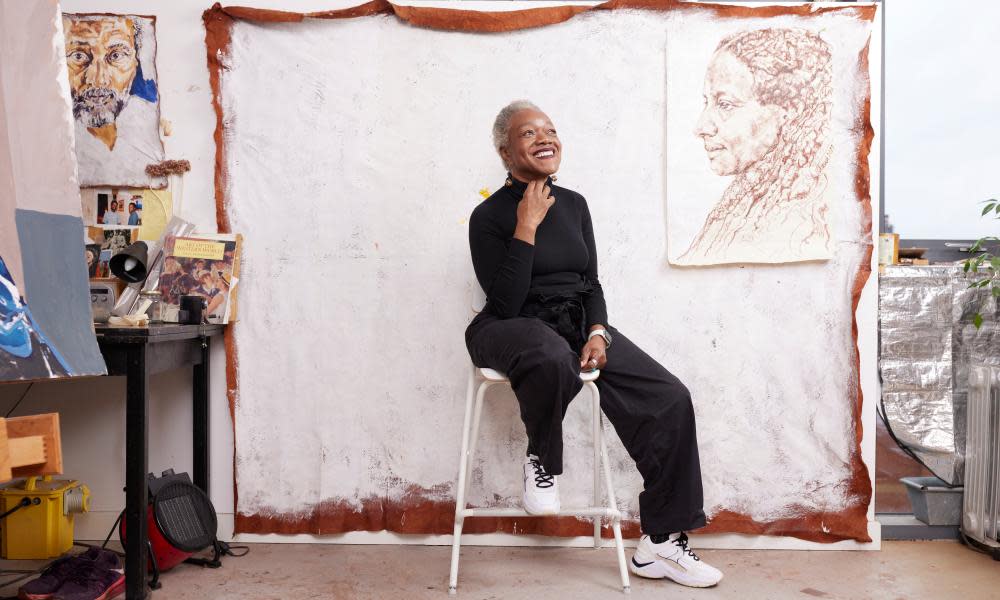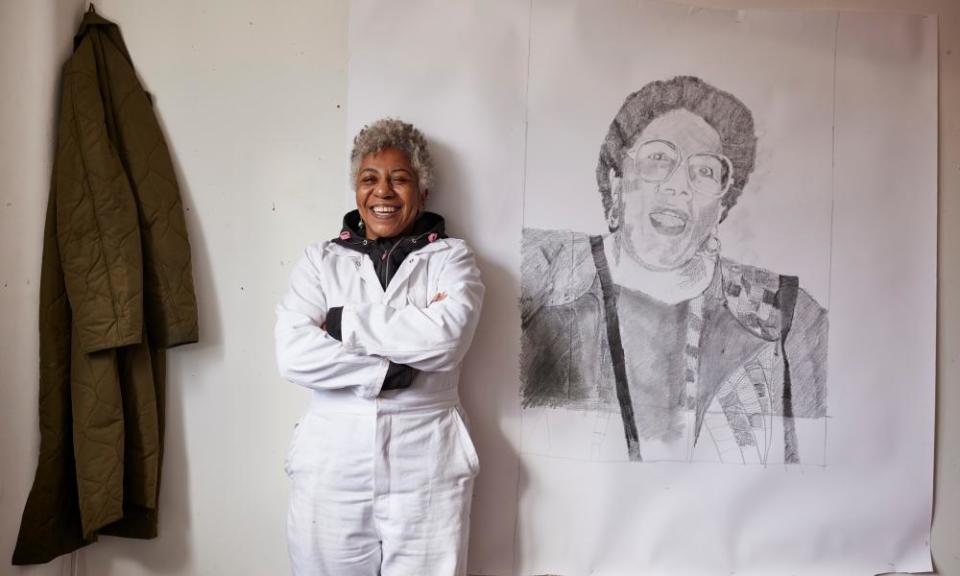Painting a new pantheon: portrait series honours Black radicals

An entrepreneurial Pan-Africanist, a boxer-turned-campaigner and a pair of African American abolitionists are among a group of radical Black figures who are featured in new portraits commissioned by the Guardian as part of its Cotton Capital project.
The Radicals series includes eight exclusive portraits painted by prominent Black artists, including Joy Labinjo, Tam Joseph and Claudette Johnson.

The figures pictured all embody Manchester’s radical self-image; they are not all from the city, but their lives and work are deeply connected to Manchester and the themes of the Guardian’s Cotton Capital series – how transatlantic slavery and colonialism shaped the world we live in today. Alongside the portraits, writers have contributed poems and stories to bring their struggles to life.
Frederick Douglass and Sarah Parker Remond were African Americans who visited 19th-century Manchester to make the case for abolition; T Ras Makonnen was a Guyanese entrepreneur who played a vital role during the city’s landmark Pan-African Congress of 1945; the groundbreaking historian Eric Williams wrote about the city’s cotton traders, painting them both as key pioneers in modern capitalism and powerful players who fuelled the slavery economy.
Black Mancunian activists also feature, such as Kath Locke, who grew up in the city’s Pan-African milieu before going on to co-found the Black feminist group the Abasindi Co-operative. Elouise Edwards, who was also an Abasindi member, set up the Roots oral history project and festival, which sought to instil pride in Black Mancunians while also capturing the origin stories of one of Europe’s oldest Black communities.
Len Johnson, a communist, boxer and activist, won 96 bouts in the ring but was prevented from fighting for the British championship on account of his race. Outside of the ring he fought the colour bar in Manchester, successfully overturning racist practices in the city’s pubs.
The final figure selected is Henry Baker, who was enslaved in Barbados among a community of people who had been traded in exchange for Manchester textiles. His story is a rare find for historians, who were able to trace his journey to the north-west of England where he later worked as a butler.

The Trinidad-born artist John Lyons depicted the economist, author and politician Eric Williams, Tam Joseph created a defiant portrait of Len Johnson, while Kimathi Donkor captured the radical spirit of T Ras Makonnen.
Joseph said he was “thunderstruck” when he heard the story of Johnson and the racist policy that stopped him from having a title shot in Britain. “He looks like a very, very tough-looking fellow but there’s a sadness about him – he’s up against this thing that he cannot do anything about it,” said Joseph.
He included a reference to the Order of Saint Michael and Saint George, an honour that was criticised in 2020 because it includes the image of Saint Michael standing on the neck of a chained Black man portrayed as a devil.
In Joseph’s portrait Saint Michael is replaced by Muhammad Ali in the famous pose he made when he knocked out Sonny Liston in their second fight in May 1965, while the devil is replaced by Saint Michael. He said: “[Johnson] wouldn’t have fought any Black people … he would have been knocking out white man, so I thought it was appropriate.”
The emerging Black British artist Labinjo composed a vivid black-and-white portrait of Elouise Edwards in her signature angular style. Three artists who were members of the influential Blk Art Group – Claudette Johnson, Marlene Smith and Keith Piper – also took part. Piper created a digital image of Frederick Douglass, while Smith and Johnson constructed sensitive portraits of Kath Locke and Sarah Parker Remond, respectively.

The Tanzanian artist Everlyn Nicodemus was given the task of tackling Henry Baker. “I wanted to portray him as a young man: dashing, beautiful, handsome, but non-threatening,” said the artist. Nicodemus ultimately made two portraits of him: one to represent the public-facing servant and the other a “shadow” vision of the man who lived the final part of his life in Cheshire.
On Tuesday, the Guardian’s owner issued an apology for the role the newspaper’s 19th-century founders had in transatlantic slavery and announced a decade-long programme of restorative justice. The Scott Trust said it expected to invest more than £10m (US$12.3m, A$18.4m), with millions dedicated specifically to descendant communities. The Guardian has launched an editorial series called Cotton Capital, which used academic research into its history as a starting point from which to expand and explore the themes it touched on.
• Sign up for the Cotton Capital newsletter for a weekly look at the series, direct to your inbox

 Yahoo News
Yahoo News 
